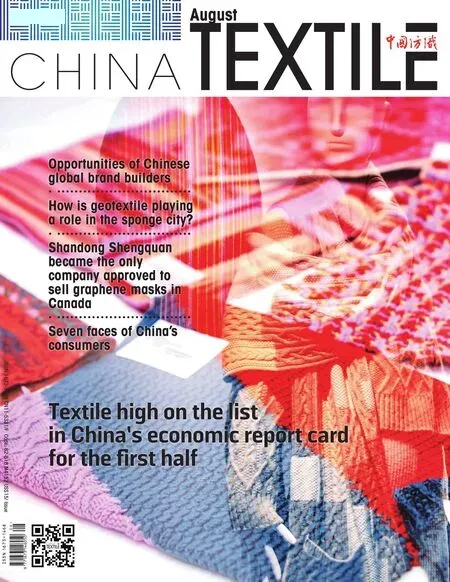Opportunities of Chinese global brand builders
By Zhong Mengxia
The emergence of the pandemic makes more people abroad passively accept online consumption and gradually become addicted to it. Obviously,nowadays, the wave of online shopping is spreading around the world.
Since 2017, Google China has been cooperating with WPP and Kantar to update the situation of domestic brands going overseas. In 2021, Google China has issued a total of 25,000 questionnaires in five major consuming countries including the United States, the United Kingdom, Germany, France and Spain, to investigate the consumption of fashion in the international market. According to the survey, one third of people in Britain, the United States and France bought fashion products online for the first time since the outbreak. Take the United States as a example, after the pandemic, the new online consumers account for a large number of men and young people, and more women in Britain and France have expanded their online consumption categories. It is worth noting that new consumers in all countries are more likely to be low—income groups. Therefore, many domestic enterprises can not sit still, and have turned to their global business strategies.
Capital is optimistic about cross—border, especially the cross—border garment industry. Clothing category is difficult to do, because the channel is much more scattered, personalized and real, and down—to—earth demand is higher. But why is China's capital market still optimistic about fashion and clothing, still willing to make a career in this less profitable and tiring industry?Shen Lihong, VP of Capital Nuts, gave the reasons: first, China's manufactur—ing system is very strong; second, China's factories have long been trained in high—end craftsmanship, fashion taste and markets; third, domestic infra—structure is getting better. With the addition of large amounts of capital and flexible supply chains, the existing supplier system has systemic opportuni—ties to change.
Online then offline
In fact, there are many domestic clothing brands that want to develop business overseas, but few brands have really made great achievements. In 2010, Li—Ning opened a store in Portland, USA. Portland is home to many of the world's most famous sports brands, but the store closed two years later. Bosideng had a similar experience. The latter opened its first overseas store in London in 2012. However, due to brexit and other factors, Bosideng closed the store in February 2017 and did not reopen until September 2018. For a long time, foreign brands emerge endlessly, while domestic brands mostly occupy a place in the domestic market,and do not give any impression for foreign consumers in terms of product innovation and popularity, so it is expected that traditional domestic brands encounter difficulties when they deploy their overseas business.For Chinese brands hoping to enter overseas markets,it is very important for foreign consumers know them and familiar with them, and the brand must carry out in—depth research on the target market. For example,the European market has become stable, people here hardly try new brands easily. In such place, brands need to step by step, and a good way is start from online shopping.
The biggest challenge to build a global brand
Design and marketing are the biggest challenges for brands. Chen Yong, founder of a marketing consult—ing firm in China, summed it up in a few words: Create hot products; value customer experience; use social networks to attractive people; work with social influenc—ers. It's easier said than done. Over the past few years,however, one Chinese company is famous for its design and marketing.
Not many people in China have heard of SHEIN or even know how to pronounce the word. In China, the company has been refusing any media interviews and trying to keep a low profile. SHEIN is an online fast fash—ion e—commerce company, selling fashion clothes in 220 countries and regions around the world. In addition to being able to quickly analyze and grasp the current trends, what is more surprising is its update speed. Its speed is twice that of fast fashion giant ZARA, and it only takes seven days to complete the whole cycle of clothing design, patterning, production and shipping. In terms of clothing styles, Zara update 12,000 new clothes every year, while SHEIN can reach this number in a week.

What is more worthy of domestic brands to learn is the marketing strategy in the new consumption era.Different from China, European and American consum—ers like to get information on social media and then go to the official website to buy. In order to make a big business in foreign markets, brands must adopt dif—ferent strategies for different consumers. In addition,pre—sale is also a good concept, there are many foreign niche brands do some marketing online first, and prod—uct after pre—sale campaign.
Additionally, Huang Xiao, VP of AllValue, said that the independent station is the core position for brands to reach consumers directly. The independent station has a great space for development in e—commerce, which can help global brand builders to have stable sales channels and master customer data to improve their user experi—ence and products. The clothing market is large and comprehensive, also small and refined, with the emer—gence of different social medias at home and abroad,there are more and more opportunities for enterprises.
- China Textile的其它文章
- Spandex price survey: demand greater than supply
- Supply and demand of yarn market forecast in the second half of year
- As price goes up and down, how the fabric enterprises survive?
- 2020/2021 China garment market development report
- Dye production decreased but is expected to pick up
- Prosperity index of the national textile and apparel specialized market declined overall

